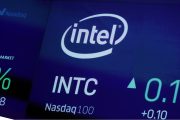Candidate Donald Trump promised to support the longtime effort of former Congressman Ron Paul to audit the Federal Reserve System, but since his election he has done nothing to promote congressional action to implement that policy. And his list of possible appointments to chair the Federal Reserve leave advocates of a sound money policy such as Paul rather underwhelmed. While the Federal Reserve itself is technically a private institution owned by its member banks, the chairman is appointed by the president.
In fact, in his latest weekly column for the Ron Paul Institute for Peace and Prosperity, Paul lamented, “This week President Trump revealed his final five candidates for Federal Reserve chair. Disappointingly, but not surprisingly, all five have strong ties to the financial and political establishment.”
The candidates include a former Federal Reserve governor and Morgan Stanley banker, Kevin Warsh; a current Fed governor and former official with President George H.W. Bush, Jerome Powell; and Gary Cohn, who is director of Trump’s National Economic Council and a former president of Goldman Sachs. As Paul wrote, “All of Trump’s potential picks are likely to continue the Fed’s current policies.” Those current policies are to inflate.
And despite his public criticism of her during the 2016 presidential campaign, Trump has not ruled out retaining Janet Yellen, the current chairman of the Fed. He has even praised Yellen for being a “low-interest-rate-person.” Sadly, Trump has apparently bought into the belief that the Fed artificially holding down interest rates is good for the economy — and his political future.
Paul sees it differently, however. “The truth is President Trump’s embrace of status quo monetary policy could prove fatal to both his presidency and the American economy.”
That the Federal Reserve even has the power to attempt to manage the entire economy of the United States should be concerning in itself. When the Federal Reserve was created by an act of Congress in 1913, advocates were extremely careful to not call their creation a “central bank” because Americans were in opposition to such an institution, having killed the First Bank of the United States in 1811, and the Second Bank of the United States in 1836.
Since the creation of the Fed, that entity has been most responsible for both increases (inflation) and decreases (deflation) in the amount of money in circulation. The Fed does this in various ways, such as by setting the discount rate — the interest rate the Fed charges member banks. If the Fed lowers that rate, it gives banks more money to loan out, thus putting more money into circulation. This will generally cause prices to be higher than they otherwise would be, but they are a result of the Fed’s inflation, not the cause.
It is the contention of many Fed-supporting economists and politicians that such inflation promotes economic growth. Actually, without the Fed, prices tend to fall (as they did in the last quarter of the 19th century), resulting in greater wealth for the average American. Rather than causing wealth, Fed-driven inflation ordinarily prevents prices from falling, making it increasingly difficult for the average American to build wealth.
Increasing the supply of money is the very definition of inflation. If the supply of money and credit is increased, then the value of money will drop, which means it will take more money (which is now worth less than before) to buy the same amount of goods and services.
Supposedly created to tame the boom and bust cycles of previous times, the Fed was less than two decades old when the nation’s economy collapsed in 1929. Since that time, Fed-driven booms have led to predictable busts again and again, such as the easy credit housing boom that led to the great bust of 2008.
Paul wrote, “Trump would do well to appoint a Fed chair who follows the teachings of the Austrian school of economics and thus understands that the only thing the Fed can do to ‘fix’ the economy is allow the correction to run its course.”
Despite the disappointment that Trump as president has said nothing about auditing the Federal Reserve or returning to the gold standard, Paul saw some positive recent developments in the states. “Arizona recently passed legislation recognizing gold, silver, and other precious metals as legal tender. Wyoming will consider similar legislation next year.”
Even if he were so inclined, Trump does not have the power to abolish the Federal Reserve on his own. But he does have the power to nominate its chairman. Rather than picking another Fed chairman who favors the government manipulation of interest rates, a better move would be to choose someone who believes the free market should set interest rates — someone like Ron Paul.
Photo: Thinkstock




